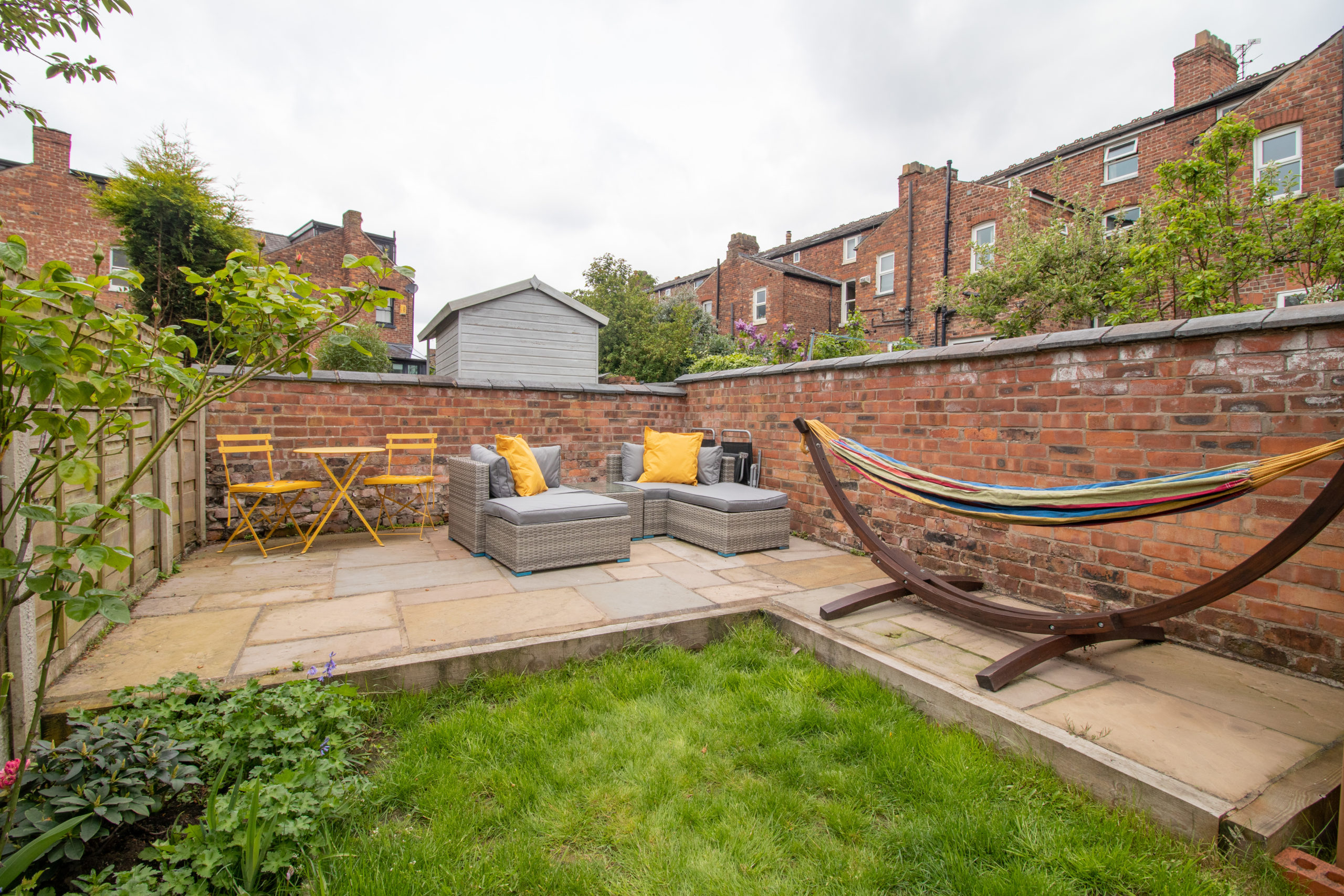How to choose the right garden furniture…
When the sun shows its face, taking a seat outside is an immediate must-do, and with gardens becoming more of an extension of our indoor living space than ever before, choosing your chairs has become as fraught as choosing a new sofa for your sitting room.
This is especially the case if you have a beautiful new home, where you want to be very sure you make the right choices about every aspect of interior and exterior design, so where to start choosing the right garden furniture for you and your new garden?
First – consider the style of furniture you want
In a modern home with clean lines and a contemporary garden, reflecting the aesthetics is important. Wrought steel with trims and rolls and fussy bits is likely to look like you brought it from your dad’s garden – it’s just not you. However, in an older property, with a well-established garden filled with plants and colour, something a little more romantic will work perfectly.
Stand in the zone where you are placing your furniture and look around you. You will be able to see quite quickly the overarching style of the garden and appreciate what style of furniture will work for you.
Next, measure up
Patio space is not finite – work out what you need (table, how many chairs) and the maximum space you can take up without falling of the patio everytime you push a chair back,
Now, choose the material you want
There are many, many options for garden furniture, some support the table and chairs being left outside year round, others less so. Some require ongoing maintenance, others less so. When deciding on your furniture, take into consideration not only where you might overwinter it, but also if you truly are the type of person to re-stain and protect furniture each spring. Loads of people are – I’m not!
Plastic
Low-cost, lightweight plastic is an easy choice to make, but it soon looks weathered and worn – and can easily be flung around the garden in a high wind, which we seem to be getting a lot more of these days. Plastic dining chairs that can be stacked in the garage and brought out on demand are a great choice, but it’s perhaps not ideal for a permanent fix.
Metal
Steel garden furniture, while long-lasting and robust, is very heavy, so opting for this is a commitment not only in terms of cost, but location – you don’t want to be heaving heavy chairs around every time the sun moves. It is a great choice for the really traditional styles however, and once it’s in place requires minimal maintenance. Lightweight – the Aluminium is a more popular choice for those seeking a more contemporary look. Often folding by design, aluminium furniture is easier to store away over winter, reducing the need for maintenance. Before you buy, check its robust – the joints should be firm and immovable – you don’t want granny taking a fall when she plumps down into her seat.
Rattan
Rattan is massive this summer, and has been for some years now. Rattan has been adopted as the catch-all term for all furniture made with weaving ribbons of material around a frame, whether real, wicker rattan or PE, a man made synthetic Polyethylene resin. The latter is far more durable and requires significantly less maintenance. It can also handle the British climate, unlike wicker, which needs to be kept dry and taken indoors to overwinter. Because of its history, rattan furniture comes in so many designs – from contemporary squares to last century curves – you will be able to find something that suits your garden style, whether that’s modern or traditional. Do try to try before you buy. With the surge in popularity, cheap sets are available that while they may be weatherproof, aren’t necessarily ‘bottom proof’ – too many bumps down into the same spot and the weak framing beneath starts to buckle.
Wood
A classic choice, but can require quite a commitment for ongoing maintenance. It will need an annual wash, sand down and application of oil, which is not something everybody is prepared to undertake. Teak wood is the luxe choice for garden furniture – it has a high natural level of oil in the wood, so it can withstand the wind and rain of an English garden, but it still needs regular care. Left untreated it weathers to an attractive silver grey, but you will soon find joints are loosening, slats are thinning and even wasps are making a beeline (waspline?) for it to nibble at the soft wood fibres for use in building their nests. If you are a certified garden potterer and DIY fan, then wood makes a beautiful choice. If not, maybe consider the alternatives.
Finally – think green
Looking after the world in which we live is becoming mainstream. Any furniture purchases, for home or garden, should have at least a nod of consideration for our planet behind them.
If you opt for wooden furniture, check it comes with an FSC mark, which will assure you it’s from a managed plantation, where sustainability is built in.
Aluminium is a great eco-friendly choice. This metal can be recycled again and again, and indeed there are many makers already using recycle aluminium to make new garden furniture – just do a quick google search to find them,
Rattan isn’t renowned for its eco-credentials, but you can find furniture that is made from recyclable materials and can be recycled in specialist facilities. If you just want what you love, make sure you take great care of it, to extend its life as long as possible and let’s beat the throwaway culture back into the past, where it belongs.
(Picture used from Limley Grove, Chorlton).
Eddie – Friday 17th June 2022.



